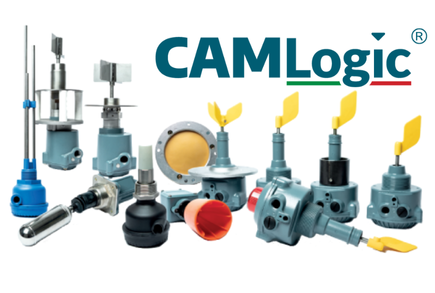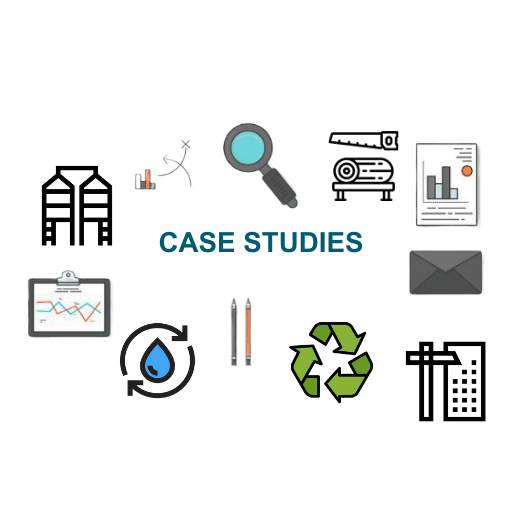News
What is a level switch?
01/10/2024
A level switch is an essential tool used in many industries to monitor and measure the level of liquids or solids within a tank or container. These devices are essential to ensure the proper functioning of industrial processes, preventing problems such as overflow or material shortages.
Types of level switches
Level switches can be divided into two main categories: Level sensors for liquids and solids. Even within these two categories, however, there are differences, depending on both the properties of the material being measured and the specific needs of the customer.
- Solids
- Rotary level switches : Employed primarily for solid materials such as powders and granulars, they operate by the constant rotation of a propeller. When the propeller encounters material resistance, its movement stops, activating a microswitch that signals the presence of the material. CAMLogic offers a wide range of solutions ideal for meeting customers' needs, divided into the PFG05, PFG57 and PFG09 families.
- Capacitive level sensors : They measure the change in electrical capacitance caused by the presence or absence of material near the probe. Ideal for solid materials, they offer accurate and reliable level measurement inside tanks or containers. CAMLogic offers the PFG06 model, which is based on the principle of detecting the electrical capacitance of a capacitor.
- Pressure level switches: Instruments capable of detecting the level of solid, lump or granular material by exploiting the pressure that the weight of the material exerts on a membrane and a microswitch. The range of products that CAMLogic offers for this category of indicators includes the MN21 and MN03.
- Pendulum switches : Instruments operated by the buoyancy of material that, as it accumulates in a conical shape, for example, inside silos, moves the pendulum from its vertical rest position, thus activating the connected microswitch and sending the signal to the control panel. CAMLogic's proposal for this category of switches is represented by the ILP3 model.
- Liquids
- Float level sensors : They use a float that follows the movement of liquid inside a tank or container. When the liquid level changes, the float moves vertically, activating a mechanical switch or electronic sensor, signaling the liquid level. They are widely used in industries such as the chemical and food industries because of their simplicity, reliability, and resistance to harsh conditions. For this category, CAMLogic's offering is represented by the PFGLP and CLR families. Both operate according to the principle described above, but differ to adapt to specific customer needs in terms of size and adaptability. In particular, the PFGLP family is also suitable for potentially explosive or gas environments.
- Conductive level sensors : Used for conductive liquids, these indicators work by detecting the passage of electric current between two electrodes immersed in the liquid, thus activating a signal relay. The product that CAMLogic offers for those who need a sensor with these features is the CLC40.
Applications of CAMLogic level switches
CAMLogic level switches have been successfully implemented in several industries, as evidenced by our case studies:
- Water purification: to monitor the level of liquids in pumping stations, storage tanks and treatment plants.
- Construction industry: To monitor the level of aggregates and liquid substances in silos and mills.
- Drying systems: used to manage the level of solids to be dried in tanks and silos due to their ability to withstand high temperatures.
- Storage facilities: used to manage the level of liquids and solids in tanks and silos.
- Wood industry: used to manage the level of wood dust and sawdust.
- Feed industry: used for feed level control in tanks and silos.
- Plastics industry: used to manage the storage control of dust and plastic materials.
- Recycling industry: used to manage the storage and control of plastic granulates inside tanks and machinery.
Advantages of CAMlogic level switches:
CAMLogic offers a wide range of level sensors, designed to suit different applications and ensure the best performance in each specific area. Here are some of the key benefits:
- Quality: CAMLogic sensors are all proven with the aim of offering its customers products with the highest possible degree of reliability
- Customization: CAMLogic level sensors can be customized to specific customer requirements, including materials, densities and operating conditions
- Accuracy and Reliability: The instruments are designed to ensure accurate and reliable measurements, which are critical for optimizing industrial processes. This helps reduce waste, improve production efficiency and increase operational safety
- Certifications: CAMLogic switches are certified to international standards such as ATEX, IECEX, MOCA, UKCA and EAC, ensuring high levels of safety and compliance with current regulations for use in complex industrial environments.
Conclusion
Level switches are essential tools for the control and management of solids and liquids in many industrial settings. The choice of the most suitable indicator depends on the specific needs of the plant and the characteristics of the fluid or material to be monitored. Adopting a reliable measurement system not only improves operational efficiency, but also increases the safety and profitability of industrial operations. CAMLogic, thanks to its wide range of customizable and certified products, establishes itself as a trusted partner, capable of providing tailor-made solutions that meet customers' specific needs and are perfectly suited to their target industry.
Click the button below to explore our product range more precisely.
Do not hesitate to contact us for more information and clarification


